5901 Botham Jean Blvd, Dallas, TX 75215
Color Sorting Technology in Recycling: A Guide to Process, Purity & AI
October 22, 2025Color sorting technology represents a major innovation in recycling by using sophisticated optical sensors to identify and separate materials based on their unique color characteristics. At recycling facilities worldwide, these advanced systems act as digital eyes, distinguishing between various colored plastics, glass, metals, and other recyclables in fractions of a second.
The technology operates through a remarkably efficient process. As materials move along conveyor belts, high-resolution cameras capture detailed images while specially calibrated light sources illuminate the objects. The system’s powerful processors analyze the reflected light patterns to instantly determine color properties. When an item matching specific color criteria is detected, precisely timed air jets activate to direct the material into its designated collection stream.
Color sorting systems have transformed recycling from a labor-intensive, error-prone process into a high-speed, precise operation. Previously, recycling facilities relied heavily on manual sorting, which limited processing capacity and sorting accuracy. Today, color sorters can process thousands of items per minute with exceptional accuracy, significantly increasing recycling rates and enhancing the quality of recycled materials entering the circular economy.
How Does Color Sorting Technology Work?
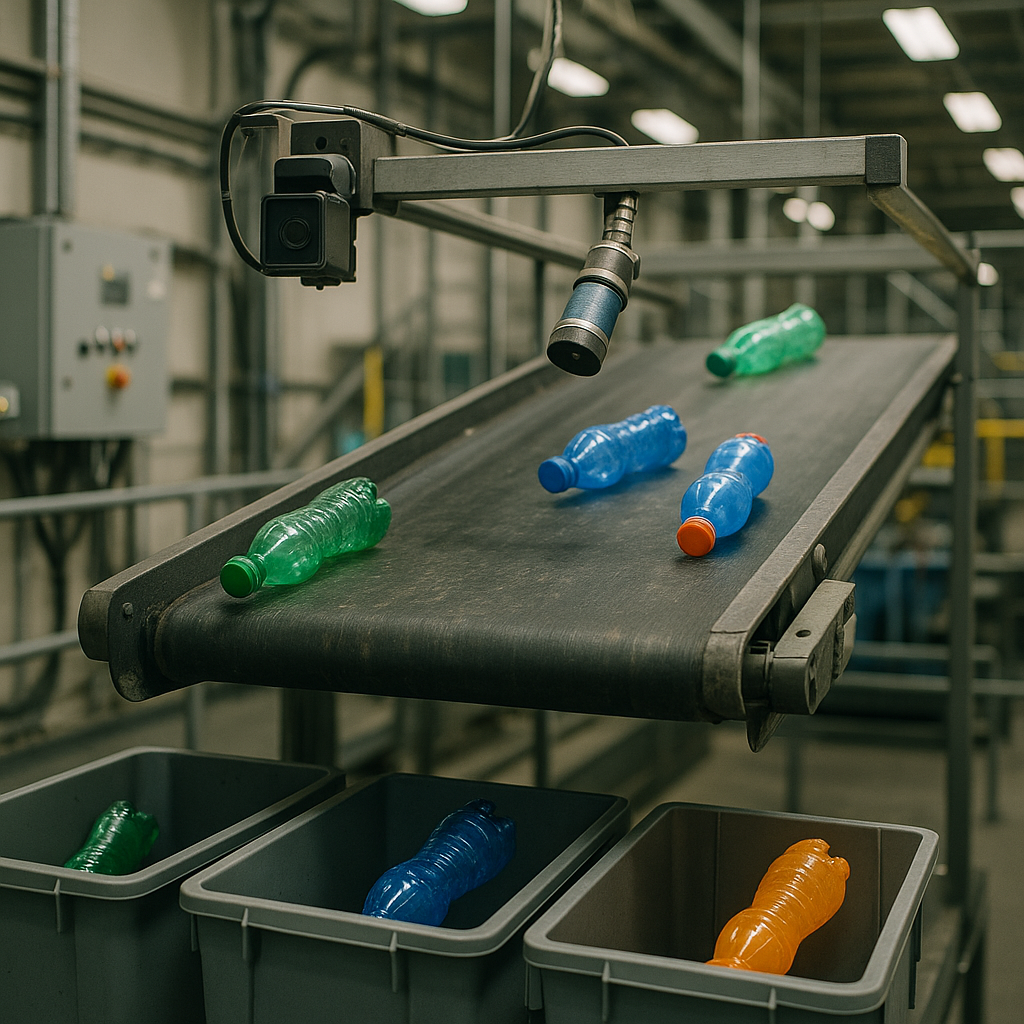
The sorting process begins when recyclable materials enter the system via feeding mechanisms that distribute items evenly onto conveyor belts. As these materials travel through the detection zone, powerful light sources illuminate them while cameras capture detailed images of each item. Advanced sensors simultaneously analyze these materials by detecting the light reflected from their surfaces.
Near-infrared (NIR) technology plays a crucial role. Unlike the human eye, which only detects visible light, NIR sensors identify materials based on their molecular composition. This enables the system to differentiate between plastic types that may appear identical but have different recycling requirements.
Once the system identifies an item’s color and composition, it makes split-second sorting decisions. The core of this technology is sophisticated computer algorithms that process visual data in real-time. When an item matches specific color parameters, precisely-timed air jets at the end of the conveyor belt quickly divert targeted items into their designated collection streams.
Modern color sorters process hundreds of items per minute with remarkable accuracy. This automated approach significantly outperforms manual sorting methods in both speed and precision. The technology can detect subtle color variations that human sorters might miss and maintain consistent performance without fatigue.
Color sorting systems are highly customizable to meet the specific needs of different recycling operations. Operators can program the system to target particular colors or materials based on market demands or processing requirements. This flexibility makes color sorting technology an essential component in modern recycling facilities that need to adapt to changing material streams.
Advanced systems incorporate multiple sorting criteria beyond just color. They simultaneously analyze shape, size, and texture along with color for more sophisticated sorting decisions. This multi-parameter approach enables recycling facilities to produce cleaner, more valuable material streams.
The effectiveness of color sorting directly impacts the quality of recycled materials. By accurately separating different colored plastics, glass, and other recyclables, these systems help produce higher-value end products. This technology is crucial for creating recycled materials that meet the quality specifications required for manufacturing new products.
What Are the Benefits of Color Sorting in Recycling?
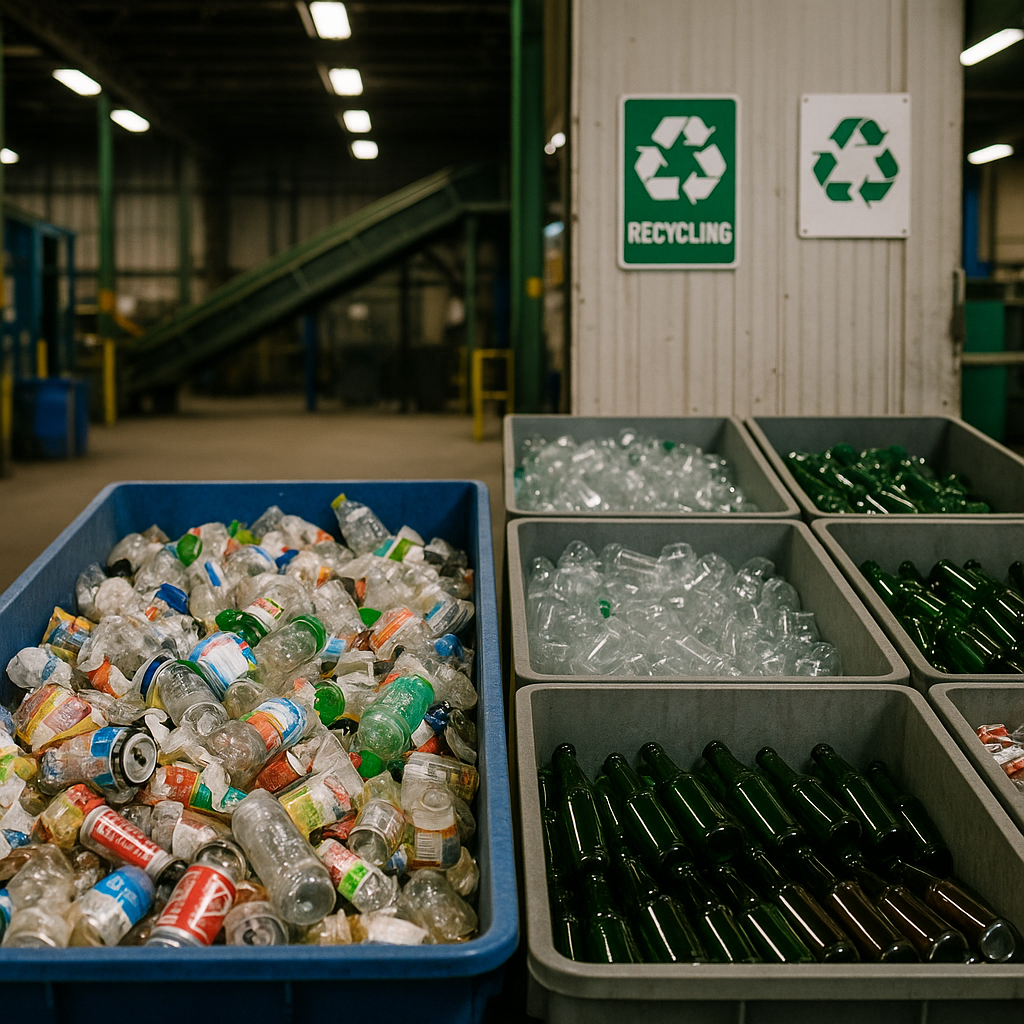
Color sorting technology has transformed the recycling industry by enabling facilities to process materials with remarkable efficiency and accuracy. These advanced systems use optical sensors, cameras, and sophisticated algorithms to identify and separate recyclables based on their color, providing many benefits throughout the recycling process.
One of the most significant advantages of color sorting is the notable improvement in processing speed. Modern color sorters can analyze thousands of items per hour, significantly outpacing traditional manual sorting methods. This capability allows recycling facilities to handle much larger material volumes, addressing the growing global waste challenge more effectively.
Key Operational Benefits
- Increased processing capacity: Color sorting machines can process up to 10,000 units per hour compared to 500-1,000 units through manual sorting.
- Reduced labor requirements: By automating the sorting process, facilities can operate with fewer workers while maintaining or increasing throughput.
- Enhanced worker safety: Fewer workers need to handle potentially hazardous materials, reducing workplace injuries and exposure to sharp objects.
- Scalability: Systems can be adjusted to accommodate varying volumes, making them suitable for both small and large recycling operations.
The precision of color sorting technology significantly reduces contamination in recycled material streams. More accurate sorting leads to materials with fewer impurities, resulting in higher quality end products. For plastic recycling specifically, color sorters can effectively separate colored from clear plastics, producing more valuable and versatile recycled materials.
Quality and Value Improvements
- Reduced contamination rates: Studies show facilities using optical sorting technology can lower contamination from around 20% to as low as 5%.
- Higher purity output: Cleaner material streams produce recycled materials that meet stricter manufacturing specifications.
- Increased material value: Purer recycled materials command higher market prices, improving the economics of recycling operations.
- Greater material recovery: More precise sorting means fewer recyclables are mistakenly sent to landfills.
Beyond operational improvements, the economic impact of color sorting is notable. By generating higher quality recycled materials, these systems strengthen the circular economy and make recycled content more attractive to manufacturers. The technology also offers flexibility, as machines can be updated to identify new types of packaging entering the waste stream.
Color sorting technology supports sustainability goals by enabling more efficient resource utilization. When recycling facilities process more materials at higher quality levels, they reduce dependency on virgin resources, lower energy consumption, and minimize waste sent to landfills. These environmental benefits align with regulatory requirements and corporate sustainability initiatives.
As this technology evolves with artificial intelligence and machine learning enhancements, the efficiency and accuracy of color sorting systems will continue to improve, further increasing their value proposition for recycling operations and strengthening the environmental case for recycling.
What Types of Materials Can Be Sorted?
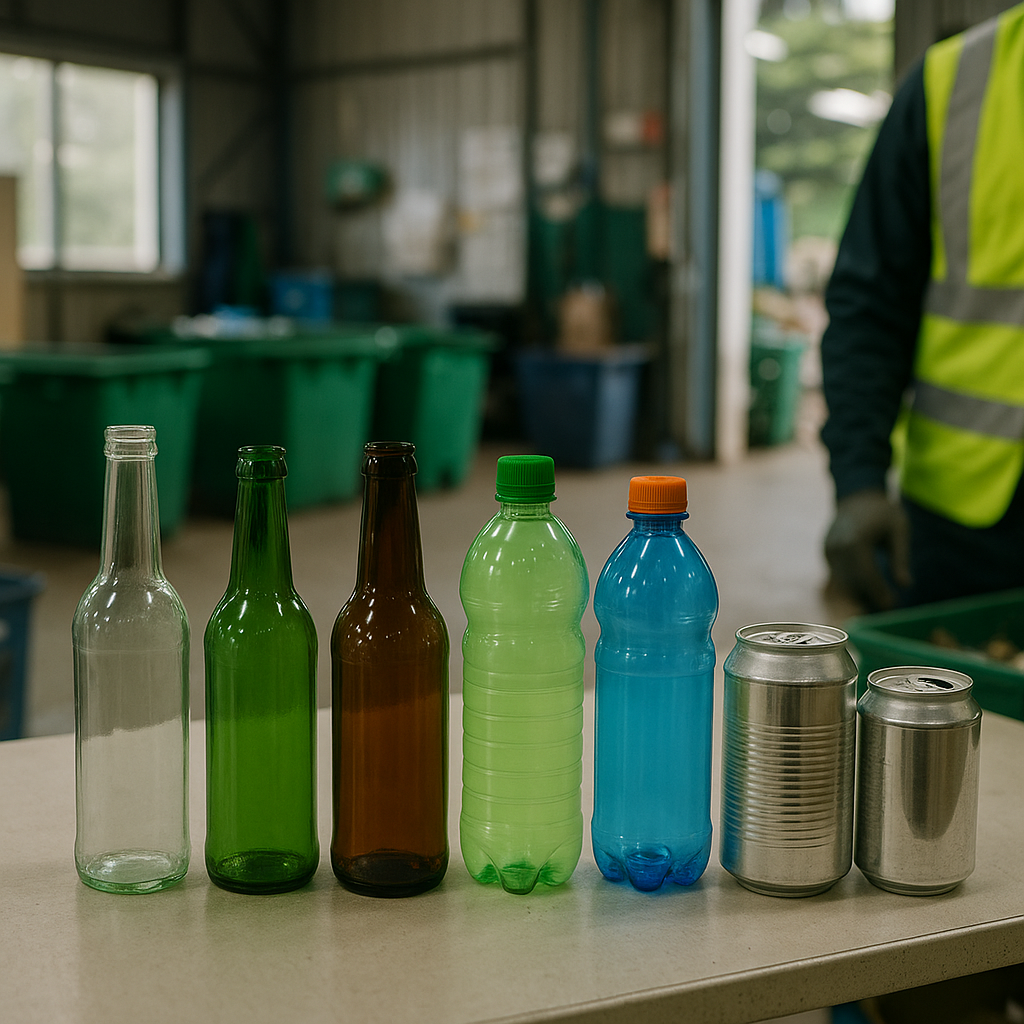
Color sorting technology effectively processes a wide range of materials, with plastics being the primary beneficiary of this advanced separation method. The technology excels at identifying and separating various polymer types based on color attributes, creating pure material streams essential for high-quality recycling.
Plastic materials that can be effectively color-sorted include:
- PET (Polyethylene Terephthalate) – Common in beverage bottles, food containers, and thermoformed trays. Color sorting separates clear PET from colored variants, enhancing bottle-to-bottle recycling applications.
- HDPE (High-Density Polyethylene) – Used in milk jugs, detergent bottles, and caps. Color sorting distinguishes natural HDPE from colored versions, achieving over 95% purity without manual sorting.
- PP (Polypropylene) – Found in food containers, bottle caps, and packaging. Color sorting effectively separates this polymer by color for specialized recycling streams.
- LDPE (Low-Density Polyethylene) – Present in plastic films, bags, and flexible packaging. Color separation streamlines the processing of these lightweight materials.
Beyond plastics, color sorting technology also processes:
Glass – This technology separates glass by color (clear, green, amber), crucial for high-value reprocessing as mixed-color glass is challenging to reuse.
Paper – It identifies white office paper separately from colored paper and contaminants, enhancing recovered fiber quality.
Metals – In some cases, color sorting aids in separating different metals, especially in aluminum recycling where color can indicate alloy type.
Color sorting technology’s adaptability is a significant advantage. As packaging materials evolve, these systems can be updated with new algorithms to identify emerging materials. Modern optical sorters combine color detection with technologies like near-infrared (NIR) spectroscopy to sort by both material type and color, creating precise material streams.
Color sorting is crucial for plastic recycling because color significantly impacts the market value of recycled plastics. Clear or natural-colored plastics generally command higher prices, while mixed-color plastics have more limited applications. By creating color-specific streams, recyclers can maximize the economic value of recovered plastics and broaden their potential uses in manufacturing new products.
| Material Type | Color Sorting Benefits |
| PET (Polyethylene Terephthalate) | Separates clear PET from colored variants for bottle-to-bottle recycling |
| HDPE (High-Density Polyethylene) | Distinguishes natural HDPE from colored versions, achieving over 95% purity |
| PP (Polypropylene) | Effectively separates this polymer by color for specialized recycling streams |
| LDPE (Low-Density Polyethylene) | Enables efficient processing of plastic films, bags, and flexible packaging |
| Glass | Separates by color (clear, green, amber) crucial for high-value reprocessing |
| Paper | Identifies and separates white office paper from colored paper and contaminants |
| Metals | Aids in separating different metals, crucial for aluminum recycling |
How is AI Enhancing Color Sorting Technology?
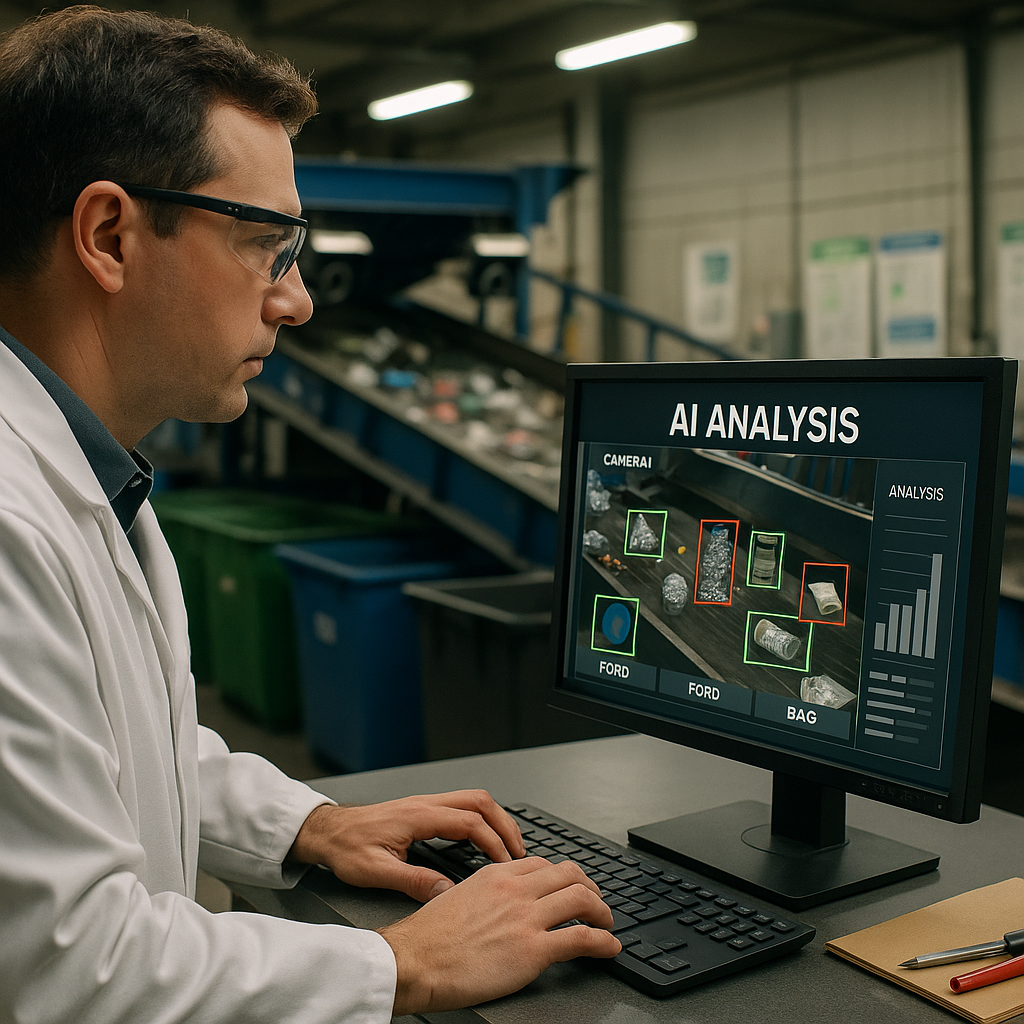
Artificial intelligence is revolutionizing color sorting in recycling facilities through advanced recognition capabilities that surpass traditional methods. Modern AI-powered systems can identify and categorize materials not just by shape but by specific colors, textures, and brand markings, at unprecedented speeds.
These systems employ sophisticated machine learning algorithms, high-resolution cameras, and near-infrared sensors to analyze recyclable items with remarkable precision. For instance, Greyparrot’s AI system can sort items into 111 categories, enabling facilities to separate materials with unparalleled accuracy.
The real breakthrough lies in AI’s adaptive nature. Unlike conventional systems with fixed programming, AI solutions continually learn and improve. Every processed item refines the system’s ability to recognize similar materials in the future. This is crucial as packaging evolves with new colors, materials, and designs entering the waste stream regularly.
Speed is another critical advantage. While human sorters typically process 50-80 items per hour, AI-equipped robots with optical sensors can sort up to 1,000 items hourly with significantly greater accuracy. The AMP NeuronTM platform, for example, uses deep learning to identify materials by color, size, shape, and brand, allowing it to process billions of items annually.
AI implementation has dramatically improved color sorting accuracy. Recycling facilities report contamination reductions of nearly 40%, resulting in higher-quality recycled materials that command better market prices. This technology can detect subtle color variations, determining whether a plastic is PET, HDPE, or another polymer type requiring different processing methods.
Data collected during sorting provides additional value beyond the immediate recycling process. AI systems track color patterns and material compositions, generating insights about changing waste streams that help recycling operations proactively adapt their processes.
Companies like Antfarm have notable advancements, with systems like X1 sorting 700 items per minute through color recognition. Similarly, AMP ONE identifies over 50 material categories, using air-jet sorting to process thousands of items per minute based on color and composition data.
The economic impact is substantial. Facilities with AI color sorting report efficiency increases of up to 60%, with corresponding reductions in operating costs. Some operations have decreased labor costs by as much as 59% while improving recovery rates by up to 40%.
Conclusion: The Future of Color Sorting in Recycling
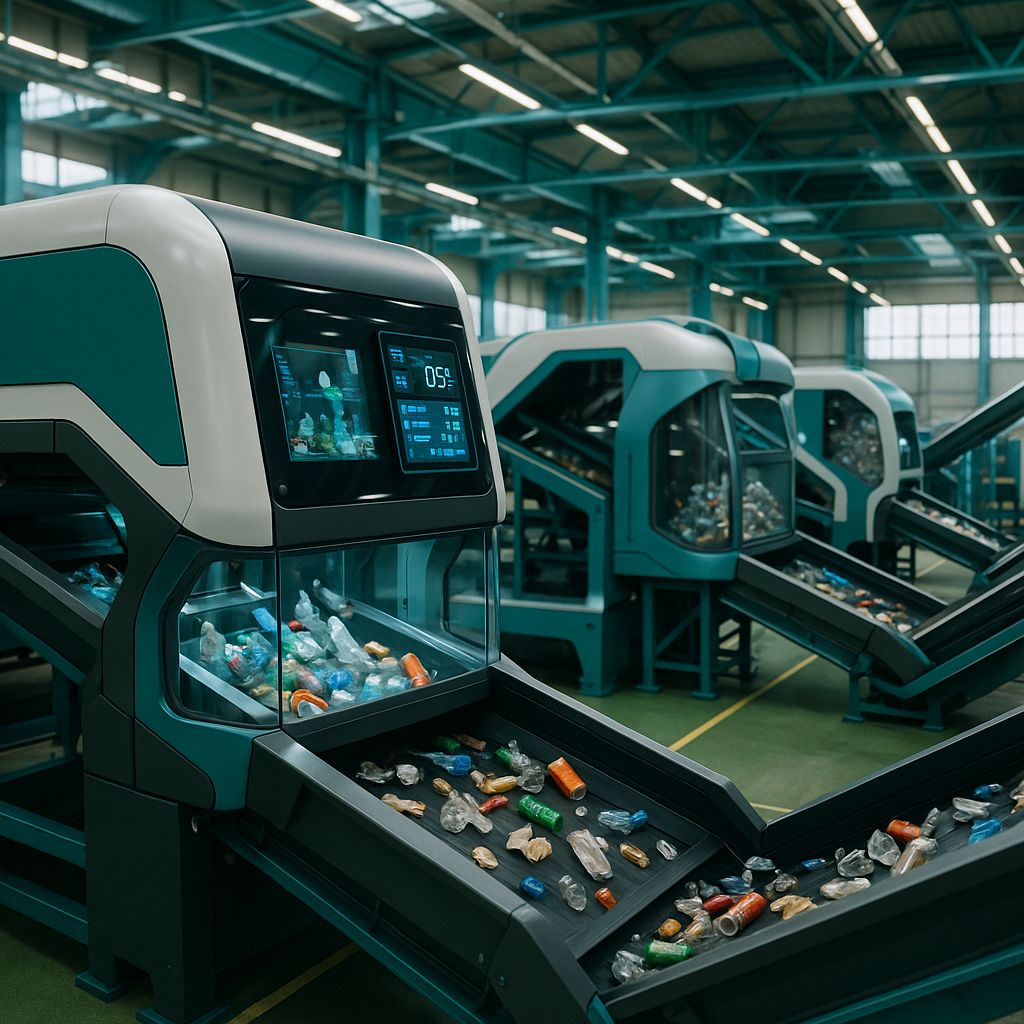
Color sorting technology has become a transformative force in the recycling industry. These sophisticated systems enable recycling facilities to process materials with exceptional accuracy and efficiency. By precisely identifying and separating materials based on color, these technologies significantly improve recovery rates and reduce contamination in recycled streams. This results in high-quality recycled materials that can effectively replace virgin resources in manufacturing.
As waste management facilities worldwide face increasing pressure to enhance recycling rates and contribute to circular economy goals, color sorting machines are becoming essential infrastructure. Integrating artificial intelligence and machine learning with these systems promises even greater sorting precision in the future. These advancements will allow recycling operations to handle more complex waste streams and adapt to changing material compositions. The environmental benefits are substantial—diverting more waste from landfills and reducing the carbon footprint associated with resource extraction and manufacturing.
For your recycling needs and to learn more about innovative sorting solutions, contact Okon Recycling at 214-717-4083.
